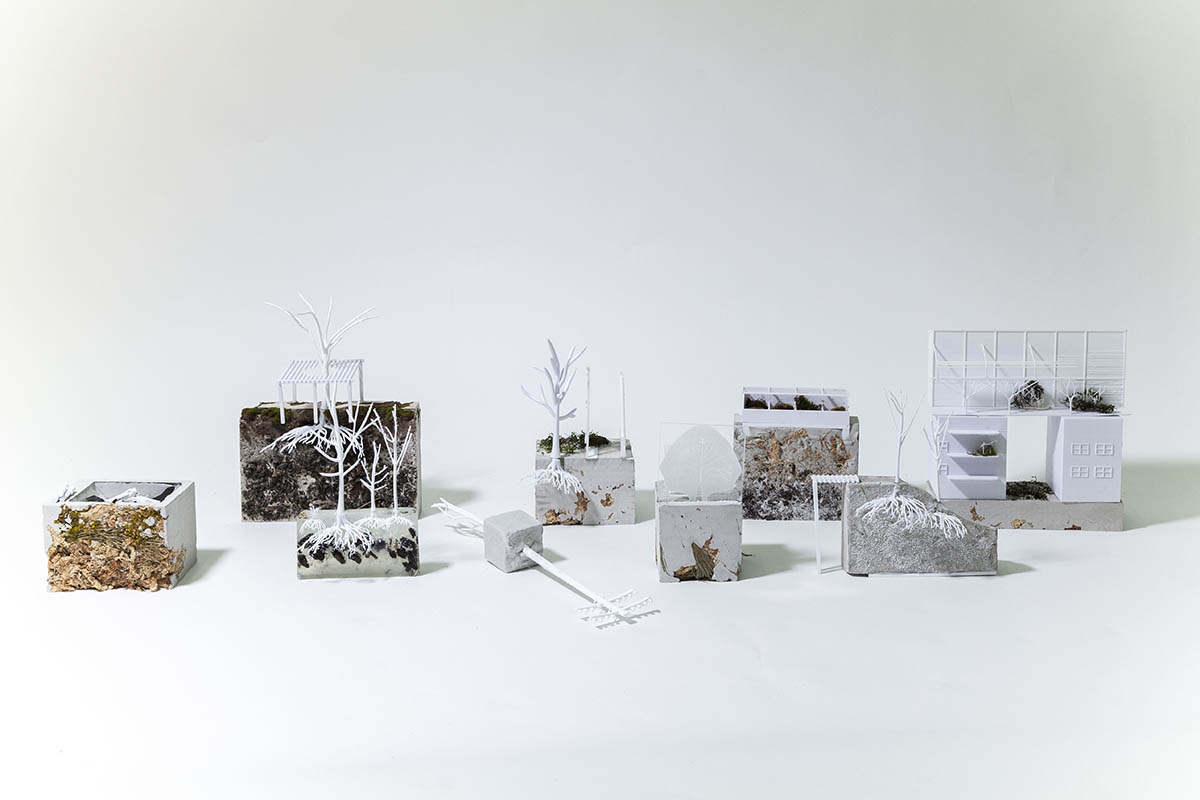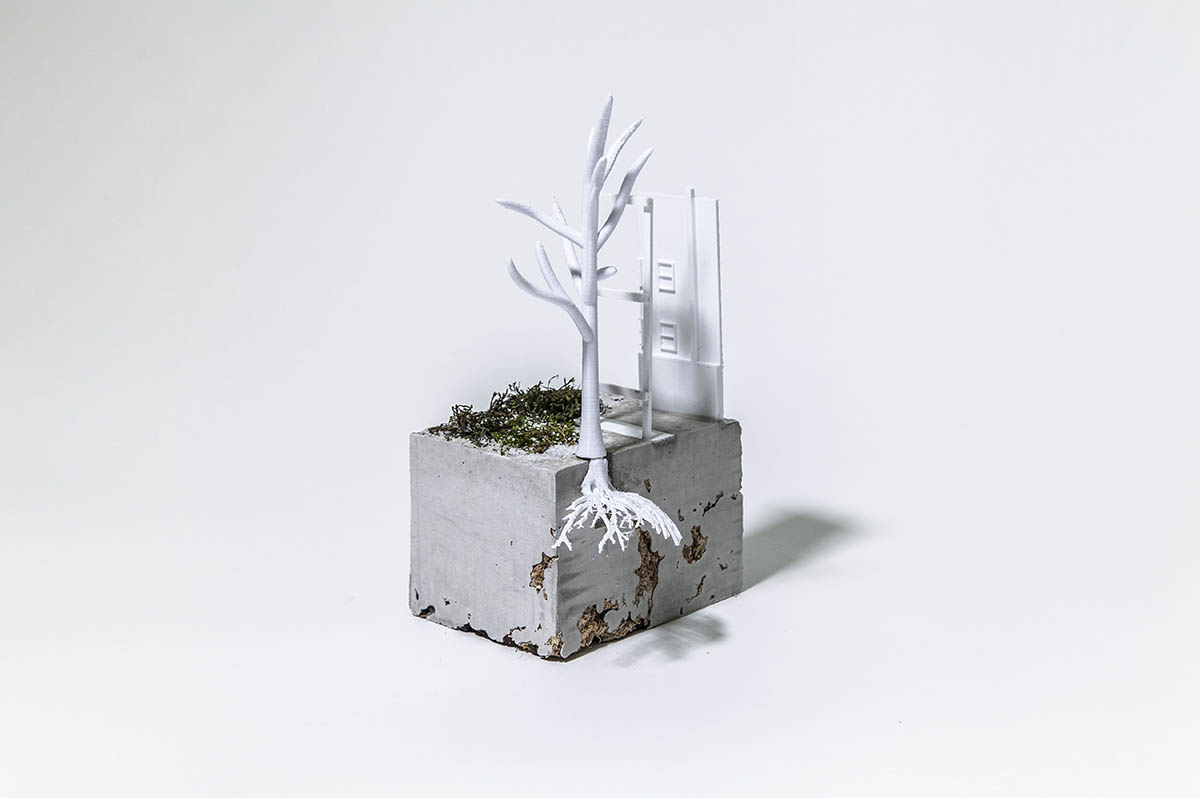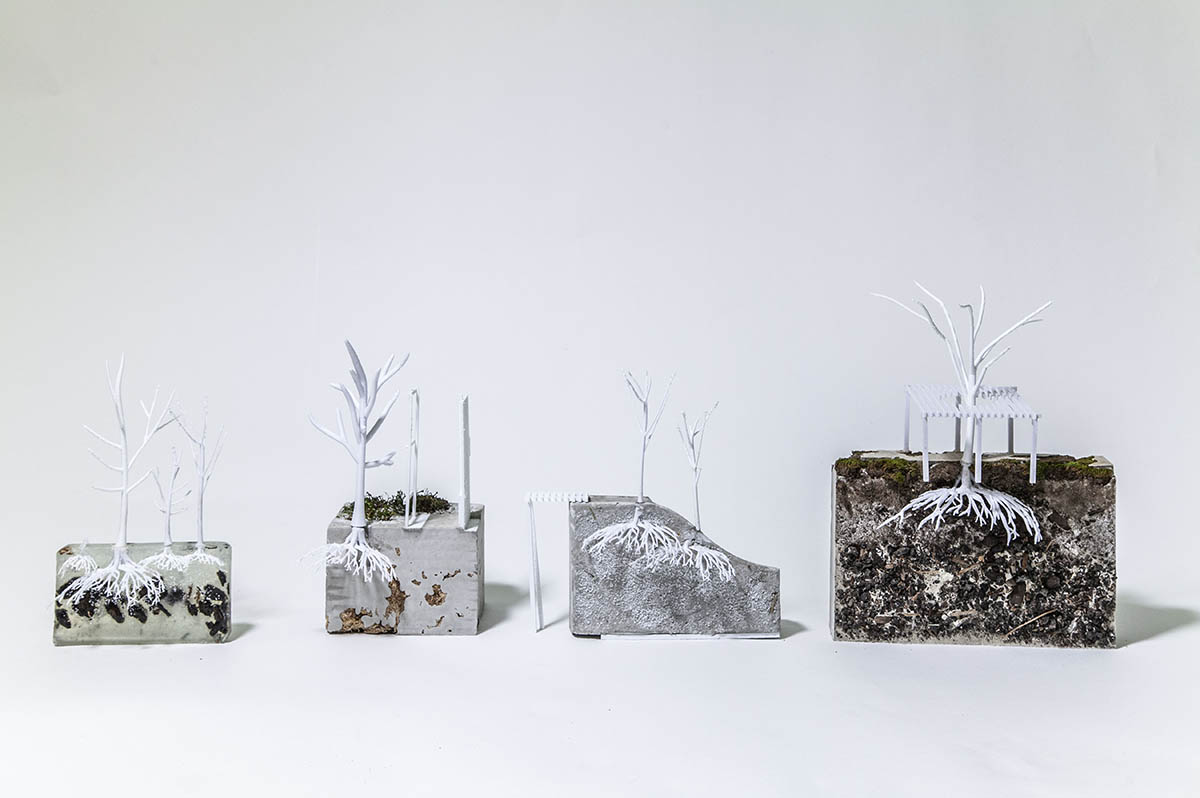Right to Grow: A Manifesto

by Kira Clingen (MLA I, MDes RR ’21), Carson Fisk-Vittori (MLA I ’20), Shira Grosman (MLA I AP, MDes ULE ’21)
The current rhetoric around city trees assigns monetary values to their carbon absorbed, health benefits provided, rainwater caught, and aesthetic appeal, but doesn’t prioritize their life-cycle beyond an average 7-year life expectancy. We critique the valuing of trees as resources for human benefit; we must revalue trees as intentional purposeful beings. This requires reconfiguration of the urban assemblage. This shift is catalyzed by an ordinance inserted into zoning code entitled Right to Grow. Rights prioritize trees needs in an urban environment. This ordinance reconfigures the false urban binary between people and woody plants by establishing spatial rights of way for tree communities built around their life-cycles. Establishing expanded space for plant communities challenges prevailing simplistic lists of street trees and planting conventions. Expanded typologies form empathetic spaces within cities reframing conventions of habitation between people and woody plants.
A case study in South Boston proposes three scenarios at different scales — City Corridors, Community Clusters, and Neighborhood Networks. These scenarios are inserted into the existing context of South Boston. The locations relate to their adjacency to the urban center and main transit thoroughfares, coastal edge, and upland conditions and are prototypical, but replicable across South Boston and nationally. Throughout the city, habitation intensifies. Zoning infrastructures are reconsidered as an entangled indeterminate web of relationships that shift towards infrastructure in service of plant communities. As cities extend across larger territories, this tree ordinance provides a framework for future tree communities at the national scale that moves beyond ecosystem services.




